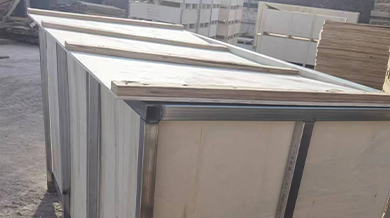-
 Afrikaans
Afrikaans -
 Albanian
Albanian -
 Amharic
Amharic -
 Arabic
Arabic -
 Armenian
Armenian -
 Azerbaijani
Azerbaijani -
 Basque
Basque -
 Belarusian
Belarusian -
 Bengali
Bengali -
 Bosnian
Bosnian -
 Bulgarian
Bulgarian -
 Catalan
Catalan -
 Cebuano
Cebuano -
 China
China -
 Corsican
Corsican -
 Croatian
Croatian -
 Czech
Czech -
 Danish
Danish -
 Dutch
Dutch -
 English
English -
 Esperanto
Esperanto -
 Estonian
Estonian -
 Finnish
Finnish -
 French
French -
 Frisian
Frisian -
 Galician
Galician -
 Georgian
Georgian -
 German
German -
 Greek
Greek -
 Gujarati
Gujarati -
 Haitian Creole
Haitian Creole -
 hausa
hausa -
 hawaiian
hawaiian -
 Hebrew
Hebrew -
 Hindi
Hindi -
 Miao
Miao -
 Hungarian
Hungarian -
 Icelandic
Icelandic -
 igbo
igbo -
 Indonesian
Indonesian -
 irish
irish -
 Italian
Italian -
 Japanese
Japanese -
 Javanese
Javanese -
 Kannada
Kannada -
 kazakh
kazakh -
 Khmer
Khmer -
 Rwandese
Rwandese -
 Korean
Korean -
 Kurdish
Kurdish -
 Kyrgyz
Kyrgyz -
 Lao
Lao -
 Latin
Latin -
 Latvian
Latvian -
 Lithuanian
Lithuanian -
 Luxembourgish
Luxembourgish -
 Macedonian
Macedonian -
 Malgashi
Malgashi -
 Malay
Malay -
 Malayalam
Malayalam -
 Maltese
Maltese -
 Maori
Maori -
 Marathi
Marathi -
 Mongolian
Mongolian -
 Myanmar
Myanmar -
 Nepali
Nepali -
 Norwegian
Norwegian -
 Norwegian
Norwegian -
 Occitan
Occitan -
 Pashto
Pashto -
 Persian
Persian -
 Polish
Polish -
 Portuguese
Portuguese -
 Punjabi
Punjabi -
 Romanian
Romanian -
 Russian
Russian -
 Samoan
Samoan -
 Scottish Gaelic
Scottish Gaelic -
 Serbian
Serbian -
 Sesotho
Sesotho -
 Shona
Shona -
 Sindhi
Sindhi -
 Sinhala
Sinhala -
 Slovak
Slovak -
 Slovenian
Slovenian -
 Somali
Somali -
 Spanish
Spanish -
 Sundanese
Sundanese -
 Swahili
Swahili -
 Swedish
Swedish -
 Tagalog
Tagalog -
 Tajik
Tajik -
 Tamil
Tamil -
 Tatar
Tatar -
 Telugu
Telugu -
 Thai
Thai -
 Turkish
Turkish -
 Turkmen
Turkmen -
 Ukrainian
Ukrainian -
 Urdu
Urdu -
 Uighur
Uighur -
 Uzbek
Uzbek -
 Vietnamese
Vietnamese -
 Welsh
Welsh -
 Bantu
Bantu -
 Yiddish
Yiddish -
 Yoruba
Yoruba -
 Zulu
Zulu
Innovative Mesh Insect Cage Design for Improved Habitat and Easy Maintenance Solutions
Exploring the Benefits of Mesh Insect Cages
In recent years, the need for effective pest management and the study of insect behaviors has amplified the use of specialized equipment like mesh insect cages. These innovative cages serve as a crucial tool for entomologists, researchers, and farmers alike, offering a multifaceted approach to managing and studying insects in controlled environments.
Mesh insect cages are constructed of lightweight, durable materials that provide excellent visibility while ensuring adequate ventilation. The design typically includes fine mesh netting which prevents the escape of small insects while allowing for adequate air circulation and exposure to light. This unique combination of features makes mesh insect cages ideal for a variety of applications, from research to agricultural pest control.
One of the primary benefits of using mesh insect cages is their role in research. Entomologists often need to study the behavior, life cycle, and reproduction of insects. With a mesh cage, researchers can closely observe insects within a controlled environment, isolating them from external factors that might skew the results. For instance, scientists can manipulate environmental variables like temperature and humidity to study their effects on insect behavior. This level of control is essential for producing reliable data, which can further our understanding of ecosystems and inform pest management strategies.
mesh insect cage

In agricultural settings, mesh insect cages serve as an effective tool for pest control. Farmers often face challenges with pests that can damage crops and reduce yields. By utilizing mesh cages, farmers can create a barrier that keeps harmful insects away from their plants while allowing beneficial insects, such as pollinators, to enter. This targeted approach not only helps protect crops but also promotes a balanced ecosystem, minimizing the need for chemical pesticides. As consumers become more conscious of chemical usage in food production, employing insect cages can offer an organic solution to pest management.
Furthermore, mesh insect cages support the rearing of beneficial insects such as ladybugs or parasitic wasps, which can be used as biological control agents. By providing a safe and regulated environment for these insects to thrive, farmers can release them into their fields as a natural way of combatting crop pests. This method enhances biodiversity and is a sustainable alternative to conventional chemical interventions.
Another noteworthy advantage of mesh insect cages is their portability and ease of use. Most cages are designed to be lightweight and collapsible, making them easy to transport between locations. This feature is particularly beneficial for researchers who may need to field-test insects in various ecological environments. Additionally, the simple setup of these cages reduces the complexity and time associated with conducting experiments or setting up pest control measures.
In conclusion, mesh insect cages offer a plethora of benefits for various stakeholders, including researchers, farmers, and environmentalists. These versatile devices not only facilitate the study of insect behaviors but also support sustainable agricultural practices by providing a natural method for pest control. As we continue to explore innovations in agriculture and pest management, the role of mesh insect cages will likely become increasingly significant, promoting healthier ecosystems and responsibly managing our food production systems. By fostering a symbiotic relationship between humans and insects, we can pave the way for a more sustainable future.
-
Shipping Plastic Bags for Every NeedNewsJul.24,2025
-
Safety Netting: Your Shield in ConstructionNewsJul.24,2025
-
Plastic Mesh Netting for Everyday UseNewsJul.24,2025
-
Nylon Netting for Every UseNewsJul.24,2025
-
Mesh Breeder Box for Fish TanksNewsJul.24,2025
-
Expanded Steel Mesh Offers Durable VersatilityNewsJul.24,2025











